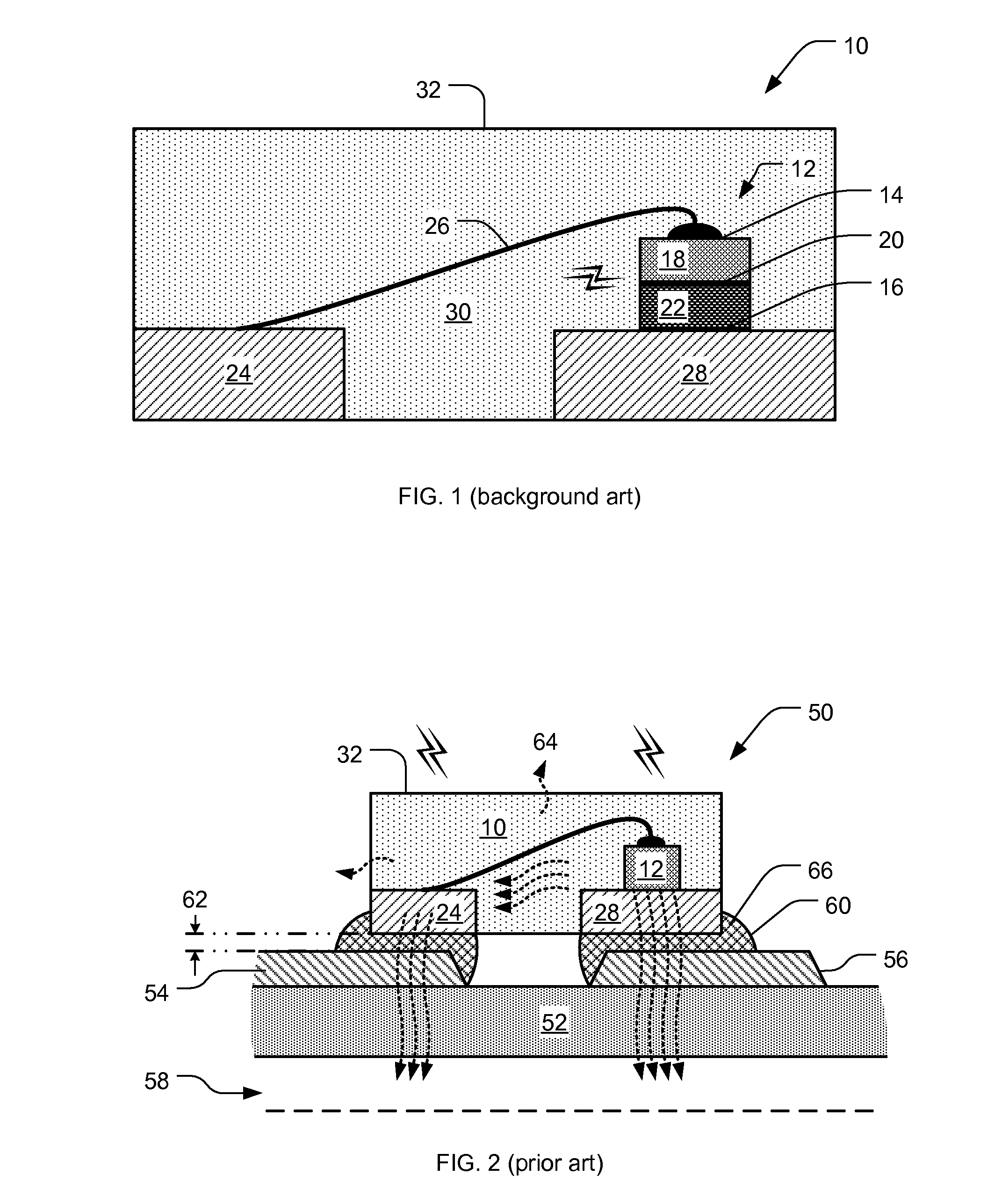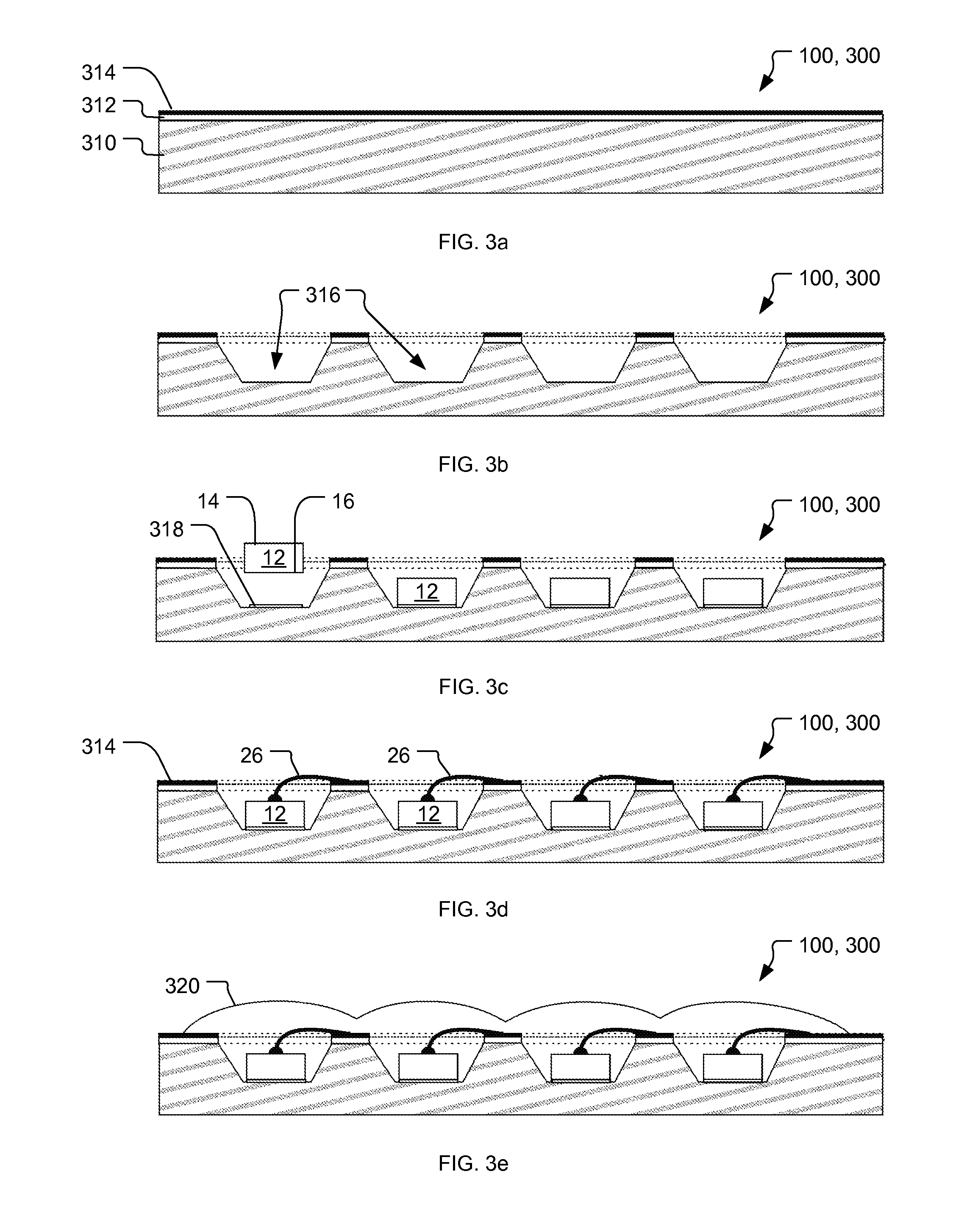Light-emitting diode package assembly
a technology of light-emitting diodes and package assemblies, which is applied in the direction of semiconductor devices for light sources, light-emitting devices, solid-state devices, etc., can solve the problems of limited operating current, design limits of devices and materials, and care must be exercised, so as to improve the light-emitting diodes.
- Summary
- Abstract
- Description
- Claims
- Application Information
AI Technical Summary
Benefits of technology
Problems solved by technology
Method used
Image
Examples
Embodiment Construction
[0050]A preferred embodiment of the present invention is a light emitting diode (LED) package assembly. As illustrated in the various drawings herein, and particularly in the view of FIGS. 3-10, preferred embodiments of the invention are depicted by the general reference character 100. A number of representative variations of LED package assemblies 100 in accord with the present invention are now described.
[0051]FIGS. 3a-e depict a series of stages in a process flow during manufacturer of a representative LED package assembly 100, 300 in accord with the present invention. [To differentiate from other variations of the LED package assembly 100, the variation in FIGS. 3a-e is referenced specifically as LED package assembly 300 and a similar convention is used throughout the following discussion.]
[0052]In FIG. 3a the LED package assembly 300 has a metal base 310, an insulator 312 coating on the top side of the base 310, and a continuous metal plating or foil 314 covering the top side o...
PUM
 Login to View More
Login to View More Abstract
Description
Claims
Application Information
 Login to View More
Login to View More - R&D
- Intellectual Property
- Life Sciences
- Materials
- Tech Scout
- Unparalleled Data Quality
- Higher Quality Content
- 60% Fewer Hallucinations
Browse by: Latest US Patents, China's latest patents, Technical Efficacy Thesaurus, Application Domain, Technology Topic, Popular Technical Reports.
© 2025 PatSnap. All rights reserved.Legal|Privacy policy|Modern Slavery Act Transparency Statement|Sitemap|About US| Contact US: help@patsnap.com



